Table of Contents

Cinnamone is the French spelling of cinnamon and most people in the USA uses it when they search about this spice.
This is exactly why we decided to provide a full article of cinnamon using the French spelling of the word.
In this article, we gathered all the information you need to know about cinnamone including the different types, health benefits, side effects alongside some tips on how to buy + use + store.
Historical overview:
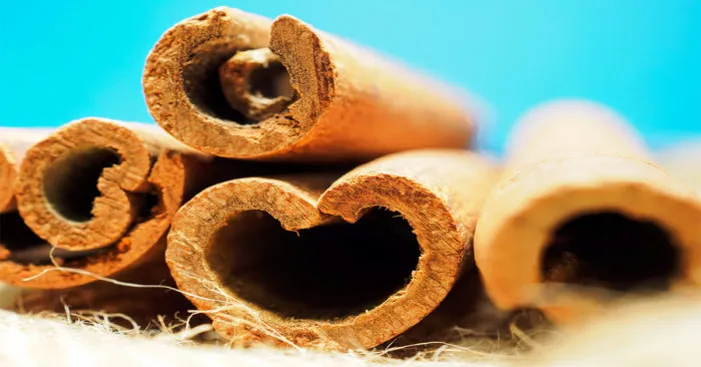
Since 2500 BC, cinnamone was a commonly used product across many civilizations.
In the Middle East, cinnamone was used for religious rituals where they offered half of the bunch to the sun and use the second half to light the fire of sacrifices.
Also, cinnamon was also a very praised spice in Ancient Egypt, and used it for trade.
The story of Solomon and the Queen of Sheba also mentions cinnamon in many holy scriptures.
Indigenous people from different cultures and of different ages knew the aphrodisiac effects of cinnamone.
It was the Arab traders who were the first ones to name this spice “Guinelle” and later introduce it to Europe.
When cinnamon reached the Romans and Greeks, they changed its name to “Cinnamomum” which is still used botanically today.
With the Roman trading reaching Ceylon China and India, people from those countries developed their own varieties.
It is also said that the Roman emperors used cinnamon-derived perfume as it was really praised back in those times.
There is even a legendary story about how Nero the emperor burned all the cinnamon stored at his wife’s funeral.
Later on, in the 16th century, Ceylon cinnamon was exploited by the Portuguese they brought it back to nowadays Portugal.
Several decades later, the Dutch exploitation of India extended the consumption of cinnamon all across Europe.
During the Middle Ages, Europeans used cinnamon in their cooking recipe, cosmetics, medicines, and perfumes.
Nonetheless, Ceylon cinnamon is still the best type of cinnamon as it grows in the region of Sri Lanka.
Types of cinnamone:
There are more than 100 different types of cinnamone with almost no difference between them in terms of taste.
This plant likes warm weather close to the Equator as it flourishes in countries like India, Burma, Brazil, Indonesia, Sri Lanka, China…
However, there are other tree barks that we call cinnamon including cinnamon Saigonor Amman, Goa cinnamon, cinnamon Padang, Malabar cinnamon, Java cinnamon, Zaylanicum cinnamon, and Cayenne cinnamon.
The 4 main varieties you can find in the markets are:
Ceylon cinnamon:
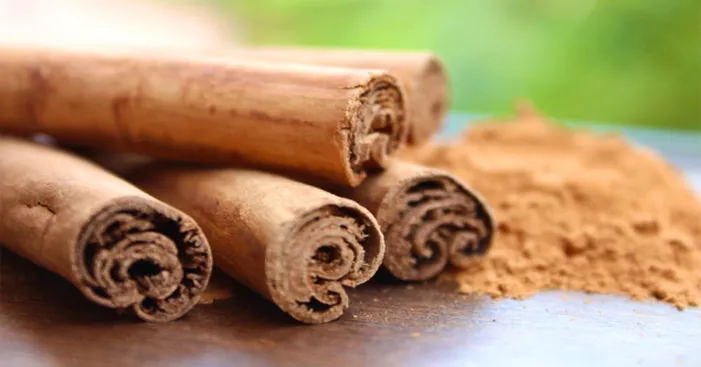
Known as the original cinnamone, the Ceylon variety comes from the Cinnamomum Verum tree that grows in Sri Lanka.
This type contains 70 times less coumarin than the cheaper Cassia cinnamone variety which makes it healthier.
In addition, it has a unique texture, a light chestnut color, and a sweeter flavor that can easily blend with most recipes.
As for the branch, it twists in a spiral shape to make a pipe-shaped stick formed by several layers of rolled barks.
This type of cinnamon has very delicate skin that is easily broken with simple finger pressure.
Saigon cinnamon:
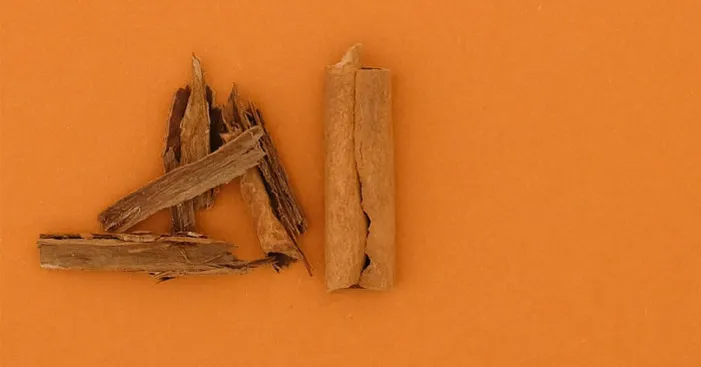
Also known as Vietnamese cinnamone, This type comes from the Cinnamomum Loureiroi tree which grows mainly in Vietnam.
It is very similar to the Chinese type and most of the time people confuse them because of the similarities.
Nonetheless, Vietnamese cinnamone has a milder taste, a darker brown color, and especially a lower couramin content.
To distinguish it from other varieties, the Vietnamese cinnamone comes in thick barks without rolled layers.
Korintje cinnamon:
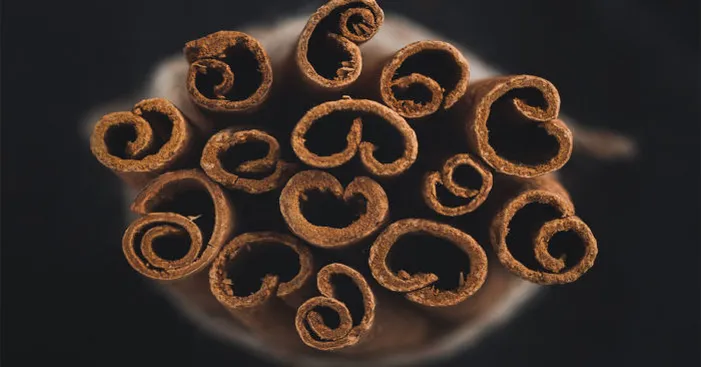
This type of cinnamone holds the biggest share in the 1 billion dollars global cinnamon market.
Some people also call it Indonesian cinnamon or Padang Cassia as it is the most-sold type of cinnamone in the United States.
This variety comes from the Cinnamomum Burmanni tree that grows exclusively in Indonesia.
In fact, what makes it the most sold in North America is that it is the cheapest type.
Nonetheless, it contains high levels of couramin which is the component that makes it spicy and gives it the common cinnamon flavor.
This compound can cause liver damage, especially with regular daily consumption of such cinnamone type.
Also, it has a very pronounced flavor that can overpower the dish which is why most chefs like to use Ceylon cinnamon instead.
In terms of shape, Korentje cinnamon comes in a very hard stick and a super dark brown color.
La cassia cinnamon (Chinese):
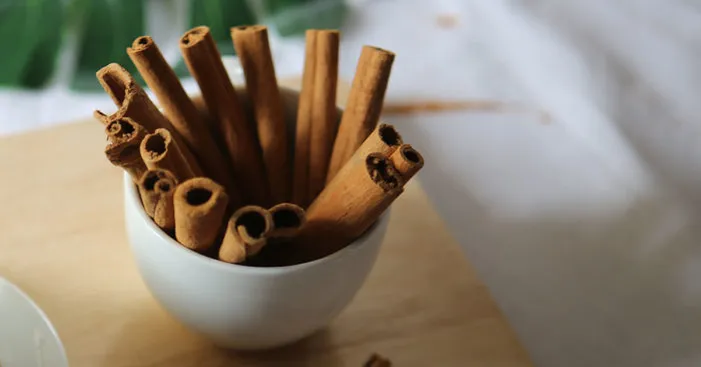
One of the main types in the market is Lacassia cinnamon (Chinese cinnamon), which comes from the Cinnamomum cassia tree.
These trees grow in Southern China and produce brown barks with slight red shades.
This cinnamone is the thickest type with the most fragrance and it comes in a double spiral shape.
However, Lacassia cinnamon has lower nutritional qualities than Ceylon cinnamon which explains its lower price.
Nutritional values and health benefits of cinnamone:
Nutritional values:
These data counts for 2 tsp (6g) of cinnamone powder:

- Calories: 15
- Protein: 0.2g
- Carbs: 4.8g
- Dietary fibers: 3.2g
- Fats: 0.1g
- E vitamin: 10%
- K vitamin: 5%
- B6 vitamin: 1%
- Calcium: 6%
- Zinc: 2%
- Manganese: 120%
- Iron: 7%
- Magnesium: 45%
- Potassium: 1%
Health benefits:
Promotes weight loss:
Cinnamone has great thermogenic effects since it can increases energy and accelerates metabolism.
As a result, including cinnamon in our diet will burn more fats, promote weight loss and protect the body from obesity.
This effect is due to the activation of proteins that pushes the body to use adipose tissue (fat) to produce energy.
In addition, consuming cinnamone improves the sensitivity to insulin which also reduces the accumulation of new fats in the body.
Being full of fibers, this spice can also increase the feeling of fullness thus resulting in less feeling of hunger.
Manages diabetes:
Many types of research confirm that once we consume cinnamone, it increases insulin levels and enhances its sensitivity.
Insulin is the hormone responsible for controlling and regulating blood sugar levels.
With the great control, cinnamone gives us over insulin levels, it makes it really beneficial for pre-diabetic and diabetic people.
Cinnamon has components that encourage the sugar in the blood to enter the cells thus dropping blood sugar levels.
Also, with the powerful anti-inflammatory properties of cinnamone, it promotes the proper functioning of the pancreas.
Finally, the spice can slow the breakdown of carbohydrates and the release of sugar which prevents sudden spikes.
Full of antioxidants:
Cinnamone has great antioxidant effects due to the presence of many flavonoids and phenolic components.
In fact, cinnamone contains eugenol and cinnamic-aldehyde which fight free radicals and neutralize their harmful effects.
With this powerful antioxidant profile, cinnamone helps prevent chronic disease and slows down the effects of aging.
Enhances cognitive abilities:
Being a natural source of many phytochemicals, cinnamone improves the brain’s ability to synthesize glucose.
In addition, the antioxidant properties of this spice prevent brain cell deterioration which can be caused by oxidative stress.
With a healthy brain, the body is well protected against dementia, Alzheimer’s, and Parkinson’s disease.
Protects the heart:
As a source of cinnamic acid and cinnamaldehyde, both organic components, cinnamone has good anti-inflammatory effects.
Once we consume this spice, it stimulates the production of nitric oxide which dilates the arteries allowing a smoother blood flow.
In addition, these chemical compounds also maintain low blood pressure by reducing cholesterol levels in the blood.
Regular consumption of cinnamone reduces the risk of plaque formation and prevents strokes and heart attacks.
Helps fight infection:
Cinnamone has one of the greatest anti-inflammatory profiles as a natural source and it can help fight fungal and bacterial infections.
In traditional medicines, inhaling cinnamon oil can help fight respiratory tract infections caused by fungus.
To do this, you can simply boil some water, then pour it into a bucket, add some cinnamon oil, cover your head with a towel and inhale the steam.
However, you can also allow the cinnamon oil steam to diffuse throughout the room to both sterilize it from bacteria and give it a good fragrance.
Drinking cinnamone infusion can also prevent bad breath and teeth cavities.
Treats gastrointestinal problems:
After eating a heavy meal, most people experience digestive problems such as constipation, gas, flatulence…
This is simply caused by the complex combination of starchy vegetables, heavy metals, and potentially the lacking of fibers.
Preparing a simple cinnamone infusion can help smooth digestion by stimulating bowel movement.
Relieves menstruation pain:
With more than 80% of females around the world suffering from menstruation cramps, finding relief becomes a must.
Women often use ibuprofen, and painkillers and apply some heat to the lower abdomen to help relax uterus muscles.
However, the most used way is through painkillers which have a detrimental effect on the liver.
This would not treat the menstruation pains but rather shift the problem to a much more dangerous problem such as liver intoxication.
Luckily, cinnamone offers anticoagulant properties which enhance the blood flow naturally without chemicals and reduce pain.
Drinking a warm cinnamone infusion tea in the morning will significantly reduce menstruation cramps most naturally.
Other health benefits:
- Helps expel phlegm.
- Reduces dizziness and nausea.
- Stimulates blood circulation.
- Regulates blood sugar levels.
- Relieves congestion.
- Prevents varicose veins.
- Improves skin health.
- Reduces fever.
Precautions before you use cinnamone:

We all have the general idea that anything natural and beneficial comes with no dangers to our health.
However, like any other type of food, cinnamone can have some side effects that we need to be aware of.
Among the groups of people that need to avoid cinnamone we mention:
- Those that suffer from a stomach ulcer.
- Pregnant women.
- Infants younger than 6 months.
- Certain people with allergies.
- People with cardiac disease.
These people should only use cinnamone, whether for consumption or therapeutic use, only after they consult their doctor.
In the form of oil, cinnamon can irritate and burn if it comes in close contact with the eyes, esophagus, mucous membrane, and mouth.
Because of that, we should only use cinnamon oil after diluting it with olive oil, sesame oil, or almond oil.
However, do not ingest cinnamon oil orally even if it is diluted as this oil is dedicated for external use only.
According to many medical types of research, consuming cinnamone in high doses can cause:
- Headaches.
- Nausea.
- Hypertensive effect.
- A rise in heartbeats.
- Stomachache.
Using cinnamone:
We generally use the shell of cinnamon which we refer to as “cinnamon stick” and can also be found made into powder or oil.
With this many forms of cinnamone in the market, there are many ways to use it, especially the powder.
The best thing about cinnamone is the fact that it combines well with both savory and sweet recipes.
For instance, cinnamon powder can elevate meat, fish, and chicken by using it as part of a seasoning mix.
You can mix ground black pepper with salt and cinnamon powder (1 tsp each) and use it to season all types of proteins.
Also, you can use cinnamon powder to enhance the flavor of cakes, desserts, and puddings.
As for savory recipes, you can sprinkle cinnamon powder on oatmeal, pancakes, fruit salads, smoothies, and coffee.
Furthermore, we can also use cinnamon to make cinnamon infusion tea by boiling some sticks in water.
This infusion tea made with cinnamone will maintain the body’s hydration while providing many beneficial nutrients.
Lemon cinnamon tea:
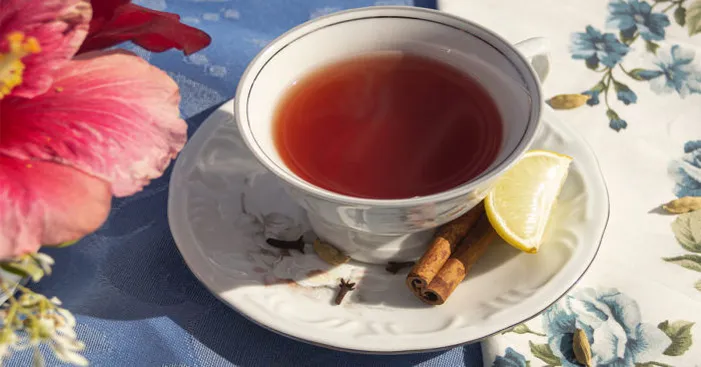
Ingredients:
- 1 cup of water.
- ½ a lemon.
- 1 tbsp of green tea and 1 tbsp of cinnamon powder (3.8g).
- Sugar or honey.
Preparation:
- Bring the water to a boil, turn off the heat then add cinnamon powder and tea.
- Cover the pot and let the ingredients infuse for 5 minutes.
- Squeeze the lemon, add sugar or honey to enhance the taste, strain, serve and enjoy it!
Chocolate shortbread cinnamon biscuit:
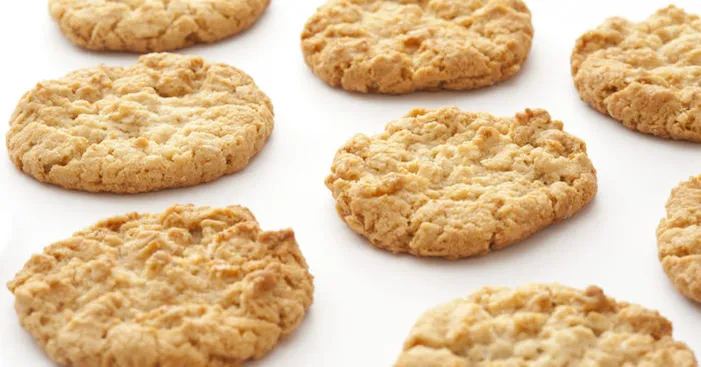
Ingredients:
- 2 cups of powdered sugar.
- 1 cup of butter (8 ounces, 18 tablespoons, 260g).
- 2 tsp of cinnamon powder.
- 1 lb. of flour (450g).
- 2 cups of dark chocolate chips.
- 1 tsp of baking powder.
Preparation:
- Preheat the oven to 350°F (170°C).
- Using a blender, mix the powdered sugar with butter until you obtain a fluffy consistent mixture.
- In a bowl, mix the flour with baking soda and cinnamon powder.
- Add the fluffy butter mixture to the bowl and mix until you get a nice homogenous dough.
- Get an oven tray and cover it with baking paper or apply a thin layer of flour or butter to prevent the biscuits from sticking.
- Shape the dough into small balls the size of a small apple then put it on the tray, keep doing that until you fill-up the whole tray, and make sure you spread them evenly.
- Using a fork, apply pressure on each of the balls to flatten them into a biscuit form.
- Bake the biscuits for 15 minutes then take them out, cover them with a piece of cloth and let them cool down.
- Now melt the chocolate chips in a small pot.
- Dip each cookie halfway into the melted chocolate, drain it well then put it back on the tray.
- Give the biscuits about 3 hours until the chocolate crystallizes, then enjoy them with your loved ones!
Beef casserole with cinnamon:
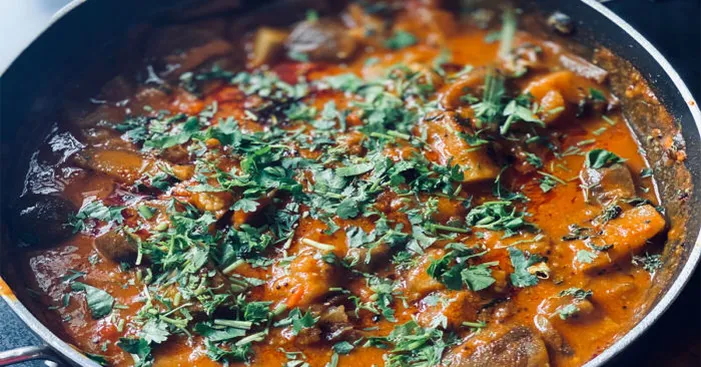
Ingredients:
- 1.5 lbs. of beef (680g).
- 3 carrots.
- 2 Zucchinis.
- 1 finely chopped onion.
- 2 cups of water.
- 4 ounces of cooked chickpeas (1/2 cup, 120g).
- 3 garlic cloves.
- 4 medium cinnamon sticks.
- 5 tbsps. of butter.
- 2 tbsps. of honey.
- 1 tsp of salt and pepper.
Preparation:
- Wash the beef and dry it on a piece of cloth then cut it into pieces (the size of a small apple).
- Melt 3 tbsps of butter in a large casserole then fry the onion until it becomes soft.
- Add the beef to the pot and stir for 3 minutes, this will caramelize the meat.
- In a bowl, mix the chopped garlic with 2 cups of water, salt, pepper, and cinnamon sticks then add the mixture to the casserole.
- Cook over medium heat (320°F, 160°C) for 90 minutes.
- Peel the carrots and zucchini then cut them into thin slices to make them easy to cook.
- Add the chickpeas and the slices of zucchini and carrots to the casserole and cook for an additional 30 minutes (you can add some water if necessary).
- The carrots and meat become should be tender by now, turn off the heat and dinner is ready!
Storing cinnamone:
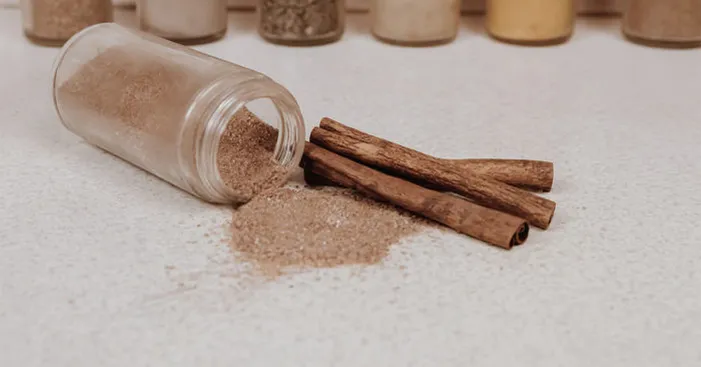
Whether you buy cinnamone in powder or stick forms, you should keep it away from moisture, light, and air.
Nonetheless, cinnamone powder tends to have a milder taste as it loses its flavor faster than sticks.
The best way to store cinnamone, stick, or powder, is to put it in a glass jar and then place it in a dark place like the pantry.
By providing the perfect storage condition for cinnamone sticks, they can last up to 2 years.
Nonetheless, cinnamon powder tends to have a lower lifespan of 5 months maximum.
Buying cinnamone:
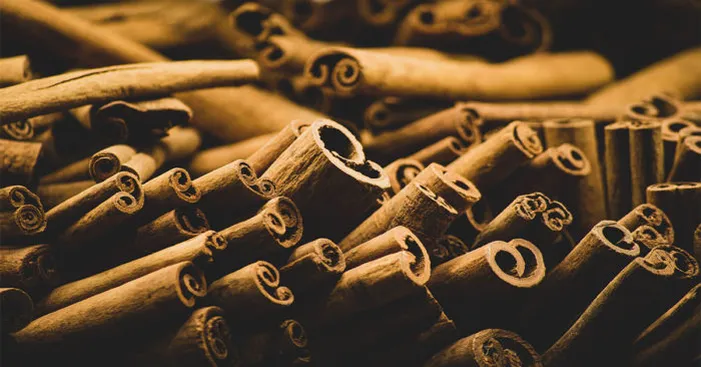
The best cinnamon you can find in the Western markets is Korentje cinnamon, Lacassia and Ceylon cinnamon which comes from Sri Lanka.
You can easily distinguish Ceylon cinnamone by its orange sticks, however, it is much more expensive than other types.
This is because Sri Lankan cinnamon has a lower coumarin content, a phenolic substance that can be harmful in high doses.
Nonetheless, the different types of cinnamon in the market are really difficult to differentiate once they are made into powder.
The cinnamon powder in the market is more likely to be either a mix of Ceylon and another type of cinnamon or made with 100% Korentje or Lacassia cinnamon.
The freshness of cinnamone can be confirmed by the flavor: the more sweetness it has, the fresher it is.
So the best way to buy cinnamon is to choose stick forms of the Ceylon cinnamone with its orange color and strong fragrance.
